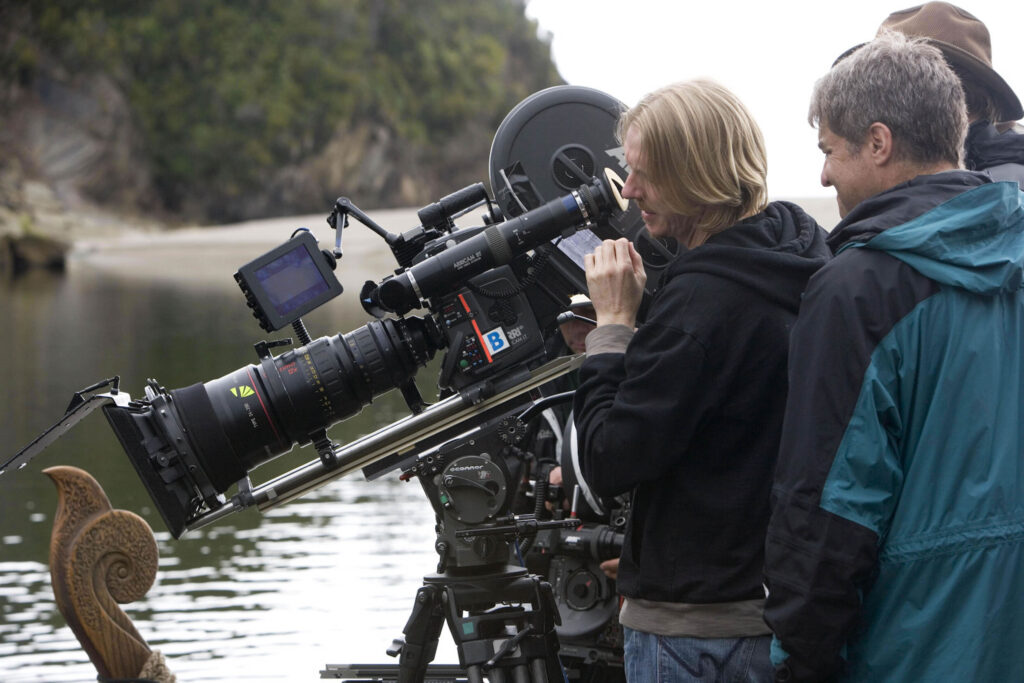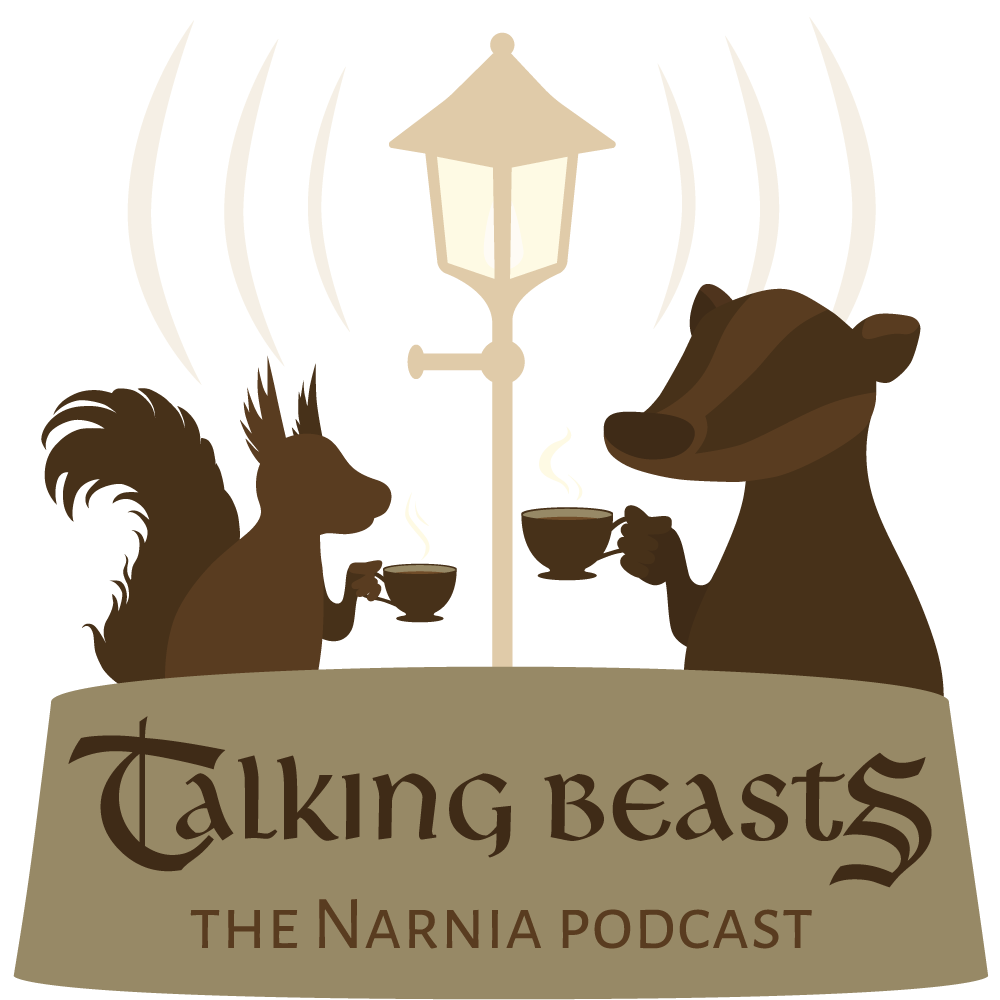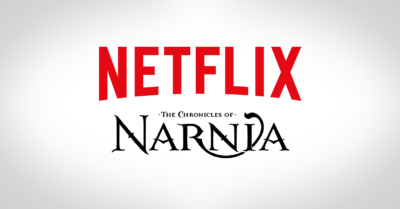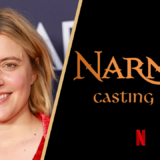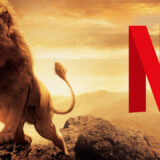NarniaWeb Visits the Prince Caspian Set
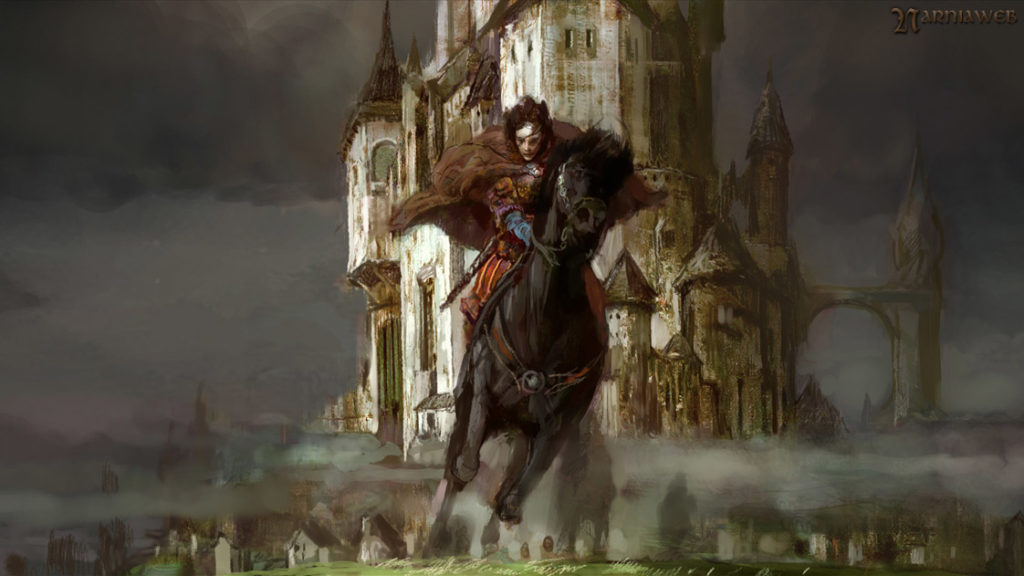
Prince Caspian Set Report #1
by Brian Carnell
In May, NarniaWeb received an invitation from Disney to visit the set of The Chronicles of Narnia: Prince Caspian. For two days, Ernie Malik (the film’s publicist) gave me and other online writers a tour of various sets and introduced us to the cast and crew.
This is the first of a series of reports on my set visit. Disney has asked that these reports be released over a few months, each one focusing on a different aspect of the production: Creatures & Visual Effects, Production Design, Costumes, and the Cast. This first report will be a general overview of my trip, a look at the filming of a sequence, and an interview with Director Andrew Adamson! Consider this report a preview for the reports to come.
I arrived in Prague on June 3, jet-lagged. I thought waiting for the movie to come out was hard, but that was nothing compared to this. I knew I would be in Narnia the next day, and time seemed to crawl by. I only got a few hours sleep because I was so excited. But the moment we entered Barrandov studios the next day, I felt an immediate surge of energy.
Here is a brief rundown of my two days spent in Narnia:
Sets visited
- The Dancing Lawn
- Telmarine Stables
- Aslan’s How interior
- Aslan’s How exterior
- Telmarine castle courtyard and drawbridge (wow)
- Tunnels Beneath Aslan’s How
- Smaller-scale Tunnels (for Wimbleweather)
Crew interviewed
- Andrew Adamson (Director)
- Roger Ford (Production Designer)
- Isis Mussenden (Costume Designer)
- Kimberly Adams (Associate Costume Designer)
- Richard Taylor (Head of Weta Workshop)
- Howard Berger (Makeup, KNB EFX)
- Dean Wright (Visual Effects Supervisor)
- Rob Derry (Animatronics)
Cast interviewed
- William Moseley (Peter)
- Skandar Keynes (Edmund)
- Ben Barnes (Caspian)
- Sergio Castellitto & Pierfrancesco Favino (Miraz & Glozelle)
- Shane Rangi (Asterius, and a stand-in for various CG characters such as Aslan, the Werewolf, and the Bulgy Bear)
Probably the highlight of the trip for me was witnessing the filming of a sequence in Ústí. It took us over an hour to get to the location, and we had to wind our way through endless dirt roads…
The Scene
In the film, the single combat between Peter and Miraz will take place about 50 yards from Aslan’s How. Various Narnian creatures (centaurs, fauns, satyrs, dwarfs, and even minotaurs) stand on either side of the entrance to the How. As Peter and Edmund emerge (wearing their armor from the first film), the Narnians begin raising their weapons and cheering them on. Edmund carries Peter’s sword as they approach the fighting area. Glenstorm is there waiting for them. When they get there, Peter takes his sword from Edmund and steps forward.
Creatures & Visual Effects
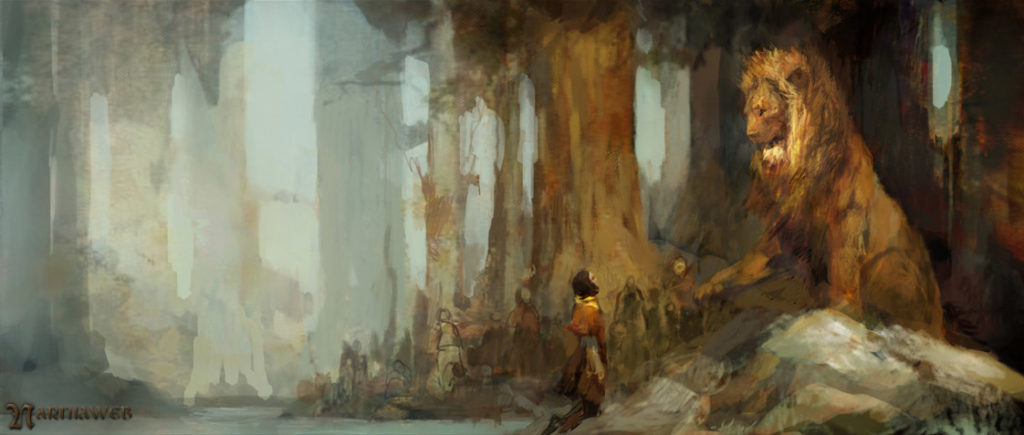 Of course, there were still many elements of this scene I didn’t see, because they will be added later in post-production. The actors playing centaurs, fauns, and satyrs wore green pants. Just as in the first film, the centaur extras had to stand on green platforms to make them the correct height. But Cornell John (Glenstorm) was elevated using a great new method that I will discuss in a future report.
Of course, there were still many elements of this scene I didn’t see, because they will be added later in post-production. The actors playing centaurs, fauns, and satyrs wore green pants. Just as in the first film, the centaur extras had to stand on green platforms to make them the correct height. But Cornell John (Glenstorm) was elevated using a great new method that I will discuss in a future report.
Behind the camera, I noticed two detailed stuffed animals, which I assume will be used as stand-ins for CG characters (they did the same thing with the Beavers for the first film). The first one I saw appeared to be a Badger, about 3 feet tall. Of course, I suppose that must’ve been Trufflehunter. The other one I saw appeared to be a mouse… but it had white fur with a brownish back. In the book, Reepicheep is described as having dark fur. Was it him that I saw? Dean Wright and Howard Berger later confirmed that Peepiceek and the other mice will be in the film, so it may not have been Reep that I saw. Unfortunately, there was so much activity on set that I didn’t get a chance to ask. “[Reep] is very cool,” Dean Wright said. “He’s very dashing, very dangerous. You want him to look cute, but he’s also got an air of danger.”
Just as in the first film, it looks like there is a pretty good mixture of real and CGI. “Usually, it’s practical effects versus digital effects,” Howard Berger told us. “But Dean and I became such good friends and worked so well together on the first film and then again on this film, that it really works as a partnership.” Ben Barnes (Caspian) also talked about appreciating the limited CGI because he didn’t have to use his imagination too much on set.
The Narnians I saw on set also seemed a little more diverse than in the first film. Berger talked about wanting to bring more of a variety to the characters in this film. “We wanted to have old age fauns, heavy-set characters, black centaurs, and just have a whole big variety.” He even said they would have child centaurs. His favorite characters in this film are the dwarfs.
The Bulgy Bear will be 100% computer generated, but Shane Rangi still wore a full bear costume on set. At the end of the day, they filmed him for about 10 seconds for lighting reference. Now, here’s the exciting part: They began shouting random directions at him, and one of them was “suck your paws!” And Shane did! He stuck his paws in his mouth (well, the bear’s mouth)! I know die-hard Narnia fans everywhere will be excited about that. It’s a funny and memorable moment in the book.
Production Design
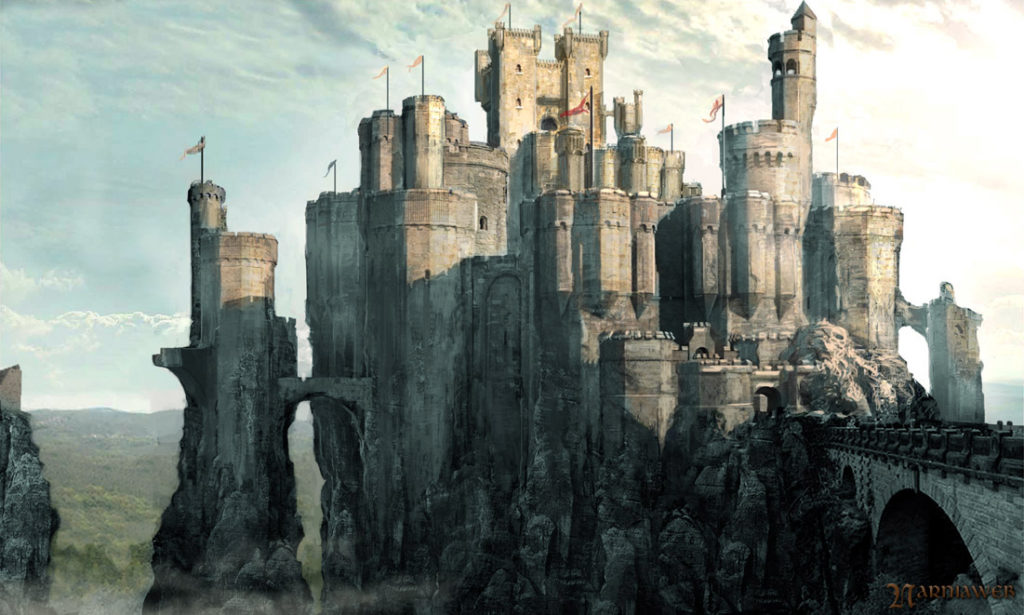 One of the reasons I love good adaptations is that it’s so much fun to see a world that exists only in my imagination become real on screen. This will be Roger Ford’s last Narnia film, and he’s going out with a bang. The cost of construction in the Czech Republic is relatively low, so they were able to build bigger sets for this film. (All the writers gasped when we saw the Telmarine courtyard, but that’s for another report).
One of the reasons I love good adaptations is that it’s so much fun to see a world that exists only in my imagination become real on screen. This will be Roger Ford’s last Narnia film, and he’s going out with a bang. The cost of construction in the Czech Republic is relatively low, so they were able to build bigger sets for this film. (All the writers gasped when we saw the Telmarine courtyard, but that’s for another report).
“We always go back to the book and look at the illustrations by Pauline Baynes,” Ford said. “And then we think ‘well, we have a movie to make here. What can we do to go a few steps further?’ So that when the children who’ve read the book see this movie, they’ll be re-inspired. So that it’s even better than they thought possible.”
The front of Aslan’s How was gray stone, and stood about 60 feet high. It seems there will be different levels to the How. The bottom had a huge rectangular entrance, which must’ve been at least 20 feet high. The second level had three openings: one on the left, one in the middle, and one on the right (the perfect place for Narnian archers to hide, I suspect). All I saw of the third level was a blue screen. Andrew Adamson told us that in the final film, the How will appear about 2 1/2 times higher.
A stone path led out of the How and to the single combat area, which is much different from the boxing ring idea described in the book… But I’ll let Roger Ford himself explain that in a future report.
Costumes
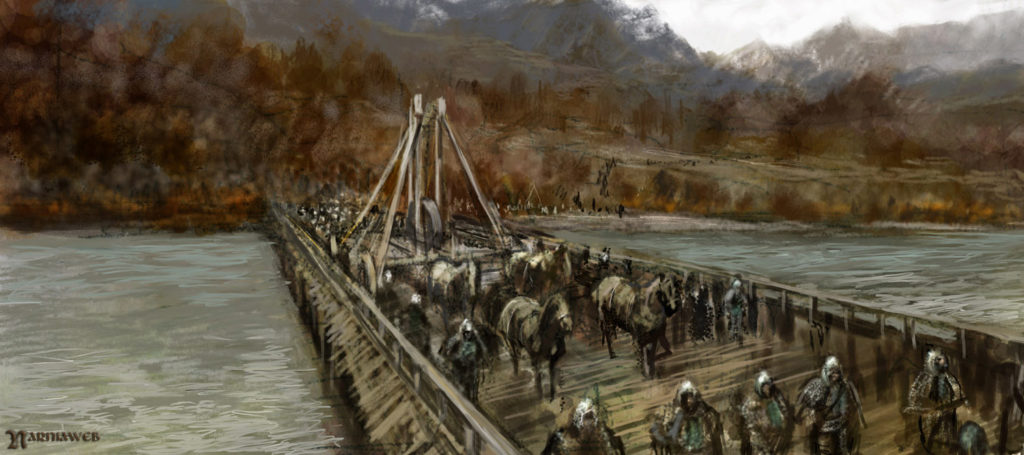 It was a great thrill to see Glenstorm (well, his upper half), because he’s one of my favorite secondary characters in the book. His hair appeared to be blondish dreadlocks, and he wore only a little armor. Kimberly Adams (Associate Costume Designer) explained that Adamson didn’t want creatures being in clothing in this film. “So, pretty much it’s the dwarfs, and then everybody else is in armor or nothing. The centaurs are bare-chested or they have armor when they go to battle.”
It was a great thrill to see Glenstorm (well, his upper half), because he’s one of my favorite secondary characters in the book. His hair appeared to be blondish dreadlocks, and he wore only a little armor. Kimberly Adams (Associate Costume Designer) explained that Adamson didn’t want creatures being in clothing in this film. “So, pretty much it’s the dwarfs, and then everybody else is in armor or nothing. The centaurs are bare-chested or they have armor when they go to battle.”
The Narnian armor in this film looks almost exactly like their armor in the first film, except very worn out and dirty. Isis Mussenden (Costume Designer) talked a lot about the tedious work of “aging” the armor. “[The first film] was the dawning of the Narnian armed forces,” she said. “Now, it’s a thousand years later.”
The look of the Narnians was established in the first film. But, designing the Telmarines was a tremendous challenge, and they tried a lot of different ideas. They have drawn on the idea in the book that they are descended from pirates. More on that in a future report.
Actors
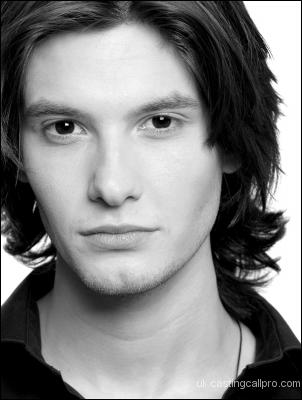 One source of amusement during the takes was the music. A few weeks before our visit, the actors came up with the idea of playing music during the takes. As William Moseley and Skandar Keynes walked out of Aslan’s How, ‘Eye of the Tiger’ was playing. Of course, they cracked up on a few takes. “It keeps the light atmosphere on set,” Moseley told us. “It reminds us that we’re here to have fun.” As odd and funny as that might sound, I think it actually did help pace the scene. I don’t think I’ll ever be able to hear Eye of the Tiger without thinking of this scene. “We just put on anything that had kind of a cool beat,” Skandar Keynes told us. “It goes so good when you’re walking down and everybody is cheering. We’re trying so hard not to crack up.”
One source of amusement during the takes was the music. A few weeks before our visit, the actors came up with the idea of playing music during the takes. As William Moseley and Skandar Keynes walked out of Aslan’s How, ‘Eye of the Tiger’ was playing. Of course, they cracked up on a few takes. “It keeps the light atmosphere on set,” Moseley told us. “It reminds us that we’re here to have fun.” As odd and funny as that might sound, I think it actually did help pace the scene. I don’t think I’ll ever be able to hear Eye of the Tiger without thinking of this scene. “We just put on anything that had kind of a cool beat,” Skandar Keynes told us. “It goes so good when you’re walking down and everybody is cheering. We’re trying so hard not to crack up.”
Caspian was not in the shot I saw being filmed, but he is present in this scene. After lunch, I saw Ben Barnes behind the camera (in full armor) watching the monitor and dancing to the music a little. Although I assume Sergio Castellitto (Miraz) and Pierfrancesco Favino (Glozelle) must be in this scene, they were not in the shot I saw being filmed.
The duel was scheduled to be filmed the next day, and there was talk of possible sunlight continuity problems. In between takes, I noticed William Moseley and a stunt guy rehearsing the fight. Moseley said that this fight will probably be about three times as long as the White Witch sword fight at the end of the first film. When we talked to Castellitto, he showed us a cut on his hand he’d received while practicing.
The Director
Much of the day was spent waiting for the sun. It was a cloudy day, so the crew had to wait for those moments when the sun was out. The moment the sun appeared, Adamson would shout “action!” But, even in the middle of all the craziness and the frustration of having to wait for the sun, Adamson never lost his cool or his smile. As he came over to us to answer questions, he joked, “If you’re the reason the sun is out, you’re welcome to stay.”
We interviewed Adamson at the very place where Peter and Miraz would duel the next day.
Q: Can you talk about your vision for this film and how it’s different from the first one?
Andrew Adamson: Believe it or not, this one I wanted to be bigger and I am regretting that decision now (laughter). The first film really was set in a new world. Narnia had been created approximately 900 years before the last film took place. This is now another 1300 years later. Narnia has been oppressed by Telmarines for a large period of that time. It’s a dirtier, grittier, darker place than the last world was. When the kids come back in, they bring a lot of nostalgia with them. They think they are going back to the place they knew and instead they’ve come back to a very changed world. For instance, the set we are at now, Aslan’s How, this is where the Stone Table once was. It fell as the earth subsided and the Narnians built a huge, sort of, almost burial mound over it and then that has fallen into ruin and disrepair as Aslan and all of that has been forgotten. So what you are seeing there is actually about 60 feet tall [pointing to the set of Aslan’s How]. The How itself, in the final film, will be about 2 1/2 times that. In general, I wanted the scale, the movie to be bigger than the last film.
Q: What made you decide to shoot in Prague and what problems have you had out here, weather etc?
Adamson: Yeah, we were expecting slightly better weather. We sent people all over the world for locations first of all and we used some locations both in Czech Republic and Poland in the last film that I wanted to reuse, so we did visit some of the same places. On top of that, there are very experienced crews here, there’s one of the largest stages in Europe, and the cost of construction is really good here so we can build bigger sets. We built an entire castle courtyard, which is just cost prohibitive in other places.
Q: Has anything given you a particular challenge on this film?
Adamson: Apart from the weather? (laughter) I feel like with most interviews on any film, apart from the Shrek films, I talk about the weather (laughter). You know, the battles, both the raid sequence in the castle and this final battle, are more complex than last time. And again, every time, particularly because we are revisiting a similar world you want to give yourself new challenges. So we deliberately made things more complicated. On top of that there’ve been a lot of films that have come out ’til now that have also raised the bar. So we wanted to make sure we were doing something new and fresh, and this battle has some really innovative things that people haven’t seen before that—well, that I don’t want to give spoilers on but there’s a whole event that takes place at the end of the battle that is entirely new and is very complex. You probably will get to see a little bit of it without knowing how it fits in when you go to second unit later on.
Q: Can you talk a little bit about what you learned from the first film and what you tried to take on board on this one?
Adamson: I learned never to do a film with locations, children, animals and visual effects (laughter) and so I decided to do that again. I mean, you always hope that after each film you’ve learned a little and you’ve improved as a filmmaker. I always feel like this is just an ongoing learning experience and it will hopefully be that throughout my career. I think the reason that this film is bigger than the last one is because I learned to do things last time. So in order to create new challenges for myself, I made this more complicated and bigger, which hopefully the audience benefits from as well.
Q: Do you miss the computer-animated stuff at all? Do you ever see yourself going back to it?
Adamson: In the last few weeks—and I’m going to mention the weather again—I’ve definitely thought that animation has its advantages. I don’t ever want to be just doing one type of thing. So there are other projects I’ve developed with DreamWorks that I’m still involved in that I may or may not direct. It’s definitely something I still want to keep involved in because it’s an art form that I really like and I think it allows you to do very different things than you can’t necessarily do in this medium.
Q: We spoke with Richard Taylor a moment ago and he was talking about how you are using models and paying homage to that. Why is it important to use models in a film like this and what does using modeling give you that you can’t get from CG?
Adamson: You know, it doesn’t necessarily give anything you can’t do. It’s just that, in certain instances, it’s more practical to do it that way. I think something very different between live action and animation is happy accidents. There are things that happen in live-action that just happen because you’ve got a group of people together and things work out a particular way. We were out here the other day about to shoot a scene and we had a lightning storm. And were I not doing a visual effects film with hundreds of creatures in blue pants, I would have just shot the film, shot the scene because it would have looked fantastic in a lightning storm. But, those kinds of things don’t happen in animation. You design everything. To some degree, that’s the same with the difference between miniatures and computer animation. To do atmosphere and particular stuff and so on, things crumbling and things breaking in CG is very complicated. And with a miniature, it’s relatively achievable so you can play with more options. So really, it does just come down to what you are trying to achieve as to which is the best technique.
Q: Have you noticed the children have grown as actors, both physically and emotionally?
Adamson: I think they have grown as both. They had a lot of experience in the last film and they’ve done stuff since then that they’ve brought to this film. We did a scene with Ben Barnes and William Moseley the other day, which was a very intense argument between the two of them. William has brought so much more than he had on the last film. The last film was the very first film he had done. Since then he’s done a little theater work, he’s been doing work on his own and then he’s had the whole experience of the last movie to bring. So it’s kind of like the nostalgia and experience that he had as an individual having lived through the last film really goes with what the character has gone through; from being in Narnia last time to this. So I think he has really grown as an actor, which I think is true across the board.
There was a lot in this report, but it’s only the beginning. In the meantime, I can’t wait to get read your reactions in the forum.
More set reports:
- ComingSoon.net
- SciFi.com
- IGN
- UnderGroundOnline: (1) (2)
UPDATE: My Set Reports are finally complete:
#2 Creatures & VFX: (Report) (Interview)
#3 Locations: (Report) (Interviews)
#4 Costumes: (Report)
#5 Actors: (Part 1) (Part 2)

